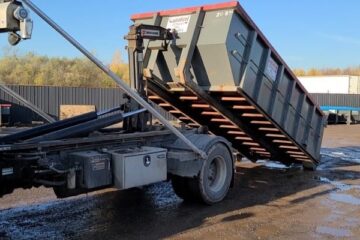If you’ve ever taken on a fencing job—whether as a contractor, landscaper, or even a determined DIY homeowner—you know how important it is to get your estimate right the first time. Underestimating means you eat costs. Overestimating might scare off a potential client. That fine balance between accuracy and professionalism is where good fencing estimation software can make a huge difference.
Let’s walk through how to calculate accurate fencing estimates using software tools, what to look for, and a few tips I’ve picked up along the way to help you avoid common pitfalls.
Start with the Basics
Before you even open up any software, you’ve got to understand what makes up a fencing estimate. These are the core pieces:
- Linear footage of the fence line
- Type and height of the fence (wood, vinyl, chain-link, aluminum, etc.)
- Posts, panels, and hardware
- Gates and accessories
- Labor costs
- Site conditions – slope, obstructions, tree removal, etc.
- Permits and inspections
- Overages and waste – because things rarely go 100% as planned
When you’re doing this manually, it’s easy to miss something—maybe you forget to factor in an extra post at a corner, or underestimate the time needed for digging in rocky soil. This is exactly where software helps.
Pick the Right Tool for the Job
There’s no shortage of fencing estimate CRM out there. A few that are popular among pros include:
- JobNimbus
- STACK
- PlanSwift
- FenceSoft Pro
- Contractor Foreman
- AccuLynx
Each has its own strengths. Some are better for large crews or companies that need project management tools built-in. Others are perfect if you’re solo or running a lean operation and just need solid estimates and takeoffs.
Measuring with Confidence
One of the best parts about using fencing software is how it handles measurements. Most of these tools integrate with satellite imagery (think Google Maps), so you can actually draw your fence line on the map and get a fairly accurate measurement right there on the screen.
If you’ve got a site plan or blueprint, some tools like PlanSwift let you upload those and trace out the fence lines digitally—no more squinting at paper and doing math by hand.
Already measured everything with a wheel? No problem—just plug your numbers in manually.
Material Calculations Made Easy
Once you’ve got your fence layout in place, the software can calculate exactly how much material you’ll need:
- Number of posts (including corners and ends)
- Panels or pickets
- Concrete for footings
- Rails, brackets, fasteners—you name it
Most tools let you set your post spacing (typically 6’ or 8’ apart), and they’ll do the math from there. If you’re using different types of fencing for different parts of the yard, you can customize each section as needed.
Better yet, many of these programs have built-in pricing catalogs—or you can upload your supplier’s price sheet—so your material costs are always up-to-date.
Labor and Site Work
Labor’s always a tricky one. Some people price it by the foot, others by the hour or day. Software tools let you do either. You can set your standard crew rate, or create templates for different job types—like one for a simple chain-link job, and another for a more complicated custom wood install.
Don’t forget to factor in things like:
- Removing old fencing
- Hauling away debris
- Leveling or grading
- Permits and inspection fees
- Time for setting posts and cure time for concrete
Some platforms even let you build these extras into a checklist, so nothing falls through the cracks.
Putting Together the Estimate
Once you’ve input all your data—measurements, materials, labor, and extras—the software pulls everything together into a clean, professional estimate. This part’s great for presentation: most systems let you add your company branding, logo, payment terms, and even e-signature options.
Clients love clear breakdowns. Seeing materials, labor, and optional add-ons separated out gives them confidence that you’ve done your homework. And if you ever need to tweak something, like add another gate or change the fence height, it’s a quick adjustment.
Why Software Just Makes Sense
Here’s the deal—doing it all by hand might save you a subscription fee, but it costs you time and increases your chances of making a mistake. Using software doesn’t just save you hours; it helps you win more bids because you’re showing up prepared, polished, and competitive.
Benefits include:
- More accurate numbers
- Faster turnaround for quotes
- Easier change orders or add-ons
- Better-looking proposals
- Centralized info for future jobs
And if you’re running a crew, being able to print out clear material lists and install instructions straight from the estimate helps keep everyone on the same page.
Pro Tips
- Keep your pricing updated. Set a reminder once a month to review supplier costs and labor rates.
- Use the mobile app. Most platforms have one, so you can create or edit estimates right from the job site.
- Create templates. If you do a lot of the same style of fence, save yourself the hassle and reuse templates.
- Integrate if you can. If your estimating software talks to your invoicing or scheduling tool, it’ll save you a ton of double-entry work.
Wrapping It Up
Using software to calculate fencing estimates is just smart business. It helps you bid faster, work more efficiently, and present yourself professionally—all while giving your clients the transparency they appreciate.
If you haven’t tried one yet, test a few free trials and see what fits your style. You’ll probably wonder how you ever did it without one.



